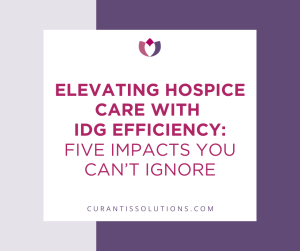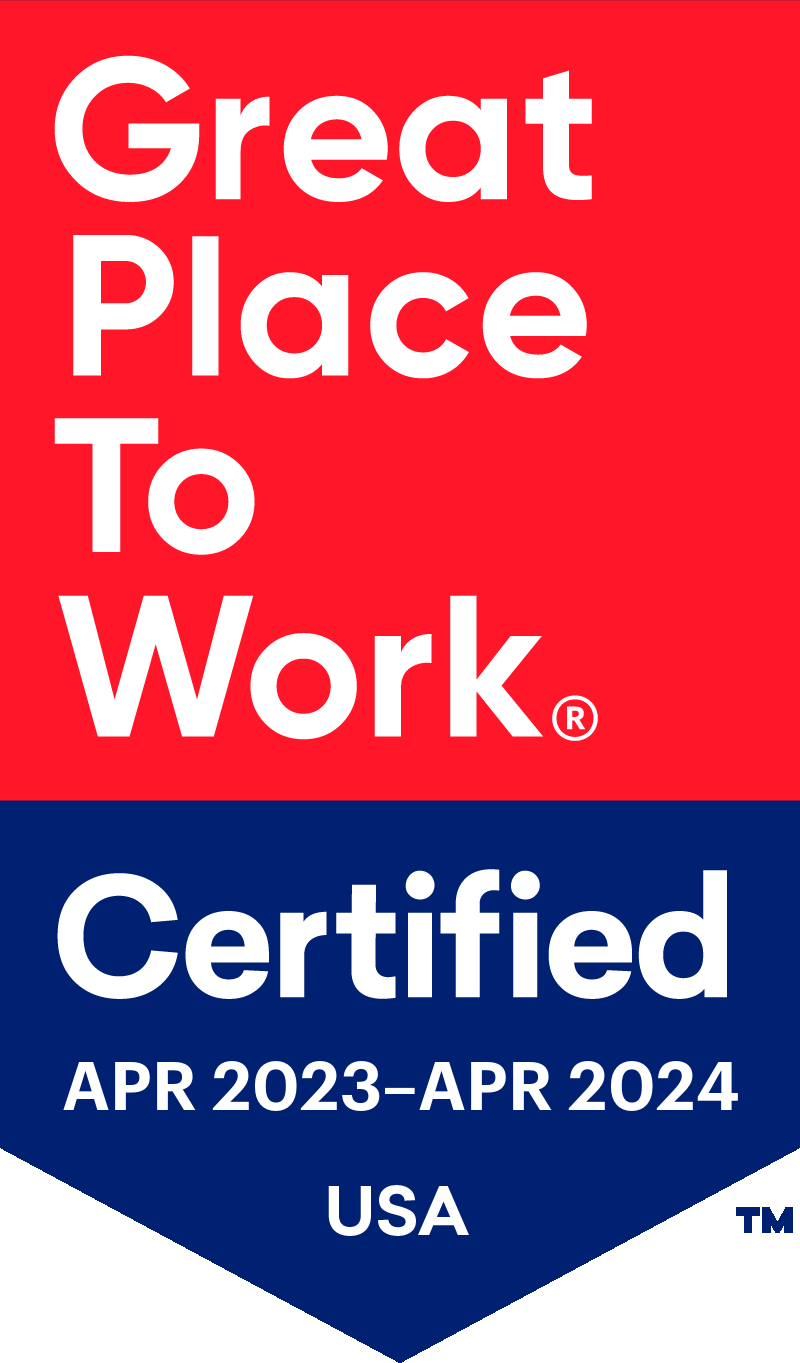Elevating Hospice Care with IDG Efficiency: Five Impacts You Can’t Ignore
In hospice care, every minute counts. As healthcare providers strive to offer compassionate, comprehensive care, the efficiency of interdisciplinary group (IDG) meetings can significantly influence the quality of care, clinician well-being, and the financial health of the organization. Efficient IDG meetings allow for more focused, effective patient care planning. By minimizing the time spent on administrative tasks and technical inefficiencies, healthcare staff can dedicate more of their day to direct patient interaction, which is central to quality hospice care. In this blog, we are sharing five key impacts of efficient IDG meetings with questions to evaluate opportunities for strengthening your organization.
Enhancing Patient Care through Time Management
The primary benefit of streamlined IDG meetings is the substantial time savings for healthcare staff. This efficiency frees up staff to spend more time at the bedside, providing direct patient care, which is not only more fulfilling for the staff but also highly beneficial for the patients.
Evaluate Preparation Time:
- How much time does your staff members currently spend preparing for IDG meetings?
- Are your IDG meetings frequently extended due to technical inefficiencies or data retrieval issues?
- Could this time be reduced with better tools or processes?
Reducing Clinician Burnout
A significant side effect of inefficient IDG meetings is clinician burnout. Clinicians often spend hours preparing for meetings and grappling with cumbersome software, time that could otherwise be spent on direct patient interaction or recuperating from the day’s emotional and physical tolls.
Evaluate IDG-Related Clinician Burnout:
- How much undue stress are clinicians experiencing due to cumbersome software, time consuming documentation, and preparation?
Financial Implications of Efficient Meetings
The opportunity cost of staff time tied up in lengthy, inefficient meetings is considerable. By optimizing IDG meetings, you will enhance staff productivity which leads to financial savings. These savings can be redirected towards more patient-centric initiatives, potentially increasing your capacity to take on more cases and improve service quality, ultimately boosting revenue.
Evaluate Financial Impacts:
- Have you quantified the opportunity cost of lengthy IDG meetings?
- What improvements could be made to turn these costs into investments in better patient care?
Improving Meeting Quality with Smart Software
The best hospice software will provide timely, pertinent insights about patients’ conditions to eliminate the need to sift through past documentation. This means less time is spent on reviewing past data and more on planning future care strategies. By focusing discussions on proactive care planning, such as addressing potential complications and coordinating bereavement support, the IDG can improve outcomes and enhance the overall patient and family experience. Additionally, smart software will make it easy to document your meeting, the key items discussed, who attended, the elements of decline and pertinent details of the care plan so you don’t have to do additional administrative tasks after the meeting.
Evaluate Your Ability for Future Planning:
- How much of your IDG meeting time is dedicated to discussing future care strategies versus reviewing past data?
- How much time is spent after the meeting documenting the discussion and meeting attendees?
- Is there a balance that could be optimized?
Streamlining Data for Better Decision Making
The best hospice software will provide a seamless flow of data, ensuring that all team members are up-to-date with the latest patient information. This eliminates the need for manual data gathering and allows the team to focus on crafting personalized care plans that reflect the current needs and potential future trajectory of the patient’s health.
Evaluate Your At-a-Glance Analytics:
- How are team members collectively informed about the patient’s current condition?
- Is it easy to see patient decline data or does it require an effort to gather the insights needed for decision making?
In Summary
The efficiency of IDG meetings is not merely a matter of administrative convenience but a critical component of effective hospice care. By evaluating your current IDG meeting practices and considering areas for improvement, your organization can enhance both patient care and staff satisfaction.
Curantis Solutions has revolutionized the way hospices prepare for these crucial meetings, providing specialized software that saves time, reduces clinician burnout, and ultimately elevates the care you provide to patients nearing the end of their lives. Our streamlined prep process and intuitive software design eliminate inefficiencies, allowing clinicians to focus more on patient care and less on administrative tasks.
Find out how much time you could save with Curantis Solutions!
We’ve created a simple ROI Calculator to gain insight to the cost of your IDG meetings and how much you could improve both IDG meeting efficiency and quality with Curantis Solutions.
For more information on how our solutions can benefit your organization or to book a demo, visit here to connect.






